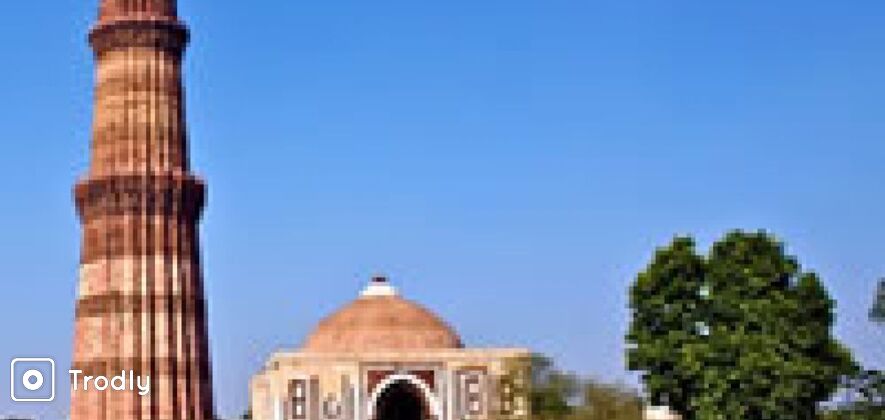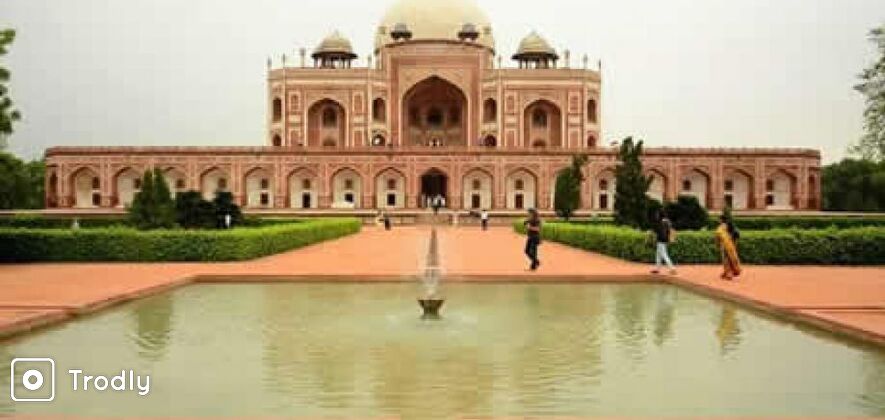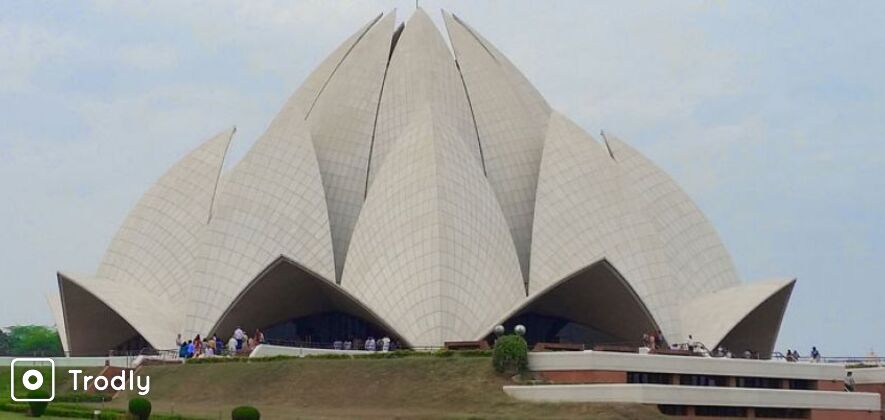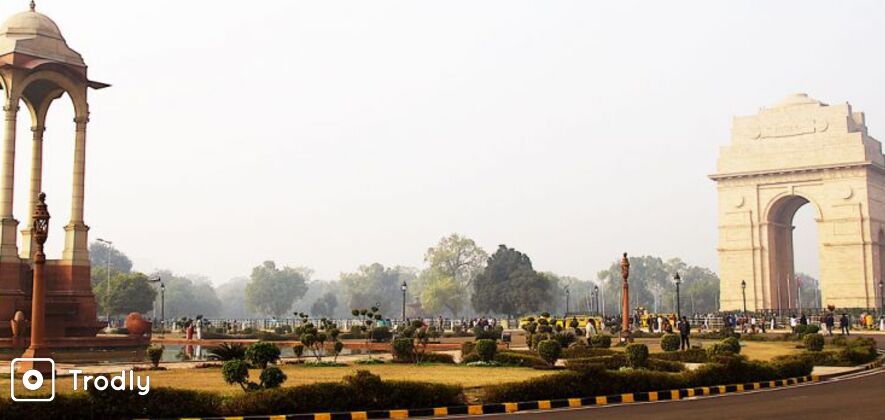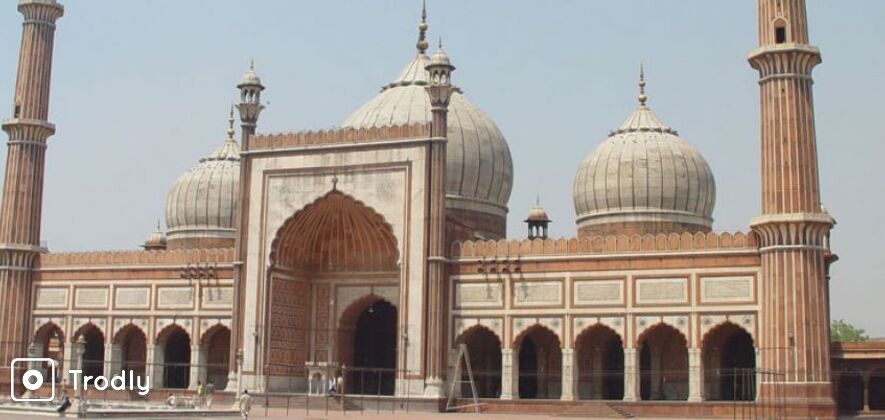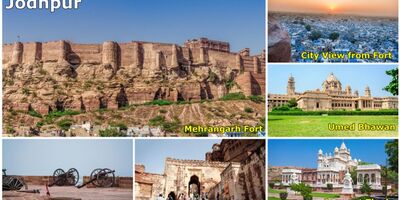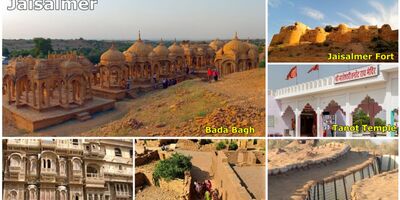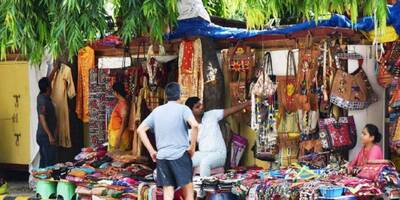Old & New Delhi City Sightseeing Private Tour with Guide
Trip Overview
Overview
Tour around Delhi is to explore the famous spots in the national capital and indulge yourself in a fun and memorable day trip through these locations. Visit Old & New Delhi on this full day sightseeing by private car with guide
Highlights:
- Qutub Minar
- Lotus Temple
- Humayun's Tomb
- India Gate
- President's House
- Parliament House
- Raj Ghat
- Jama Masjid
- Chandni Chowk
Brief Itinerary:
Day 1:
09:00 hrs: Pickup from your hotel
Morning: Sightseeing tour of New Delhi. New Delhi is the blend of old and new. You will first visit the Qutub Minar complex, a UNESCO World Heritage Site, built by Qutub-ud-Din Aibek in 1199. He built the Qutub Minar and Qutub Jami Mosque by destroying 27 Hindu and Jain temples. The Minar is about 230 ft. high with a spiral staircase that has 379 steps. Qutub-ud-Din died in 1210 without completing the minaret. Later Islamic rulers completed, renovated and repaired it. The Iron Pillar in the center of the mosque's courtyard was originally a flagpole from a Hindu temple built by Chandragupta II (375-413 CE). It probably had a Garuda (mythical bird associated with God Vishnu) on top that is now missing. This pillar is from its bottom under the ground to its top 23.62 feet in length of which 3.05 feet is underground. The pillar is made out of almost pure malleable iron with a high phosphorus and low carbon, sulfur and manganese content so that it has not rusted since hundreds of years.
Later, proceed to Humayun's Tomb (UNESCO World Heritage Site), built in the 16th century as a memorial to the Mughal Emperor Humayun. Bega Begum, also known as Haji Begum, the Persian wife of Humayun, supervised the construction of the tomb for her husband. Humayun's Tomb was the first building to be constructed during the reign of Akbar. The mausoleum was built from 1562-1572 AD with the help of a Persian architect, Mirak Mirza Ghiyuath. The tomb clearly exhibits the influence of Persian art and was a landmark in establishing some of the essential norms for later Mughal mausoleums in India. It is set in the middle of a geometrically arranged garden. In Islam, there is a concept that paradise or 'Jannat' is a place set somewhere in the middle of the garden with water flowing through them: it is called the Char Bagh as the entire garden is divided into four parts. The mausoleum is also known for several of the eminent Mughal personalities buried here. Among others, there are graves of Hamida Begum, Akbar's mother; Dara Shikoh, Shah Jahan's son and Bahadur Shah II, the last Mughal Emperor.
Thereafter, drive through the new imperial capital designed by Sir Edwin Landseer Lutyens and his assistant, Herbert Baker. A majestic, tree-lined and broad avenue was placed in the center of the new capital. At its eastern end a royal and raised pedestal with an Imperial Canopy covering the statue of King Emperor George V was installed. At the western end was the impressive Viceroy's mansion that now serves as the official residence of the President of India. To the east of the Viceroy's mansion were the south block (now Prime Minister's office) and north block (now Home Minister's office) of the central secretariat on either side of this avenue that was originally called the Kingsway. Its name was changed to Raj Path after independence of India. The circular building of the council chamber was built in the northeast of the central secretariat. It serves as the Parliament of India now. When the construction of New Delhi started, the memories of the First World War were still lingering. On February 10, 1921, the Duke of Connaught, laid the foundation of a war memorial. Sir Edwin Lutyens designed this memorial in the form of a triumphal, 160.8 feet high, arched Gateway at a short distance from the Imperial canopy with the statue of George V. It was designed to commemorate the 13'516 Indian and British soldiers of Imperial India who died in the First World War. Another memorial to honor the soldiers of Indo-Pakistan war of December 1971 was added to this memorial in the form of a raised platform with a reversed rifle with a helmet hanging on it. On 4 corners of the platform are four eternal flames. On top of the India Gate a 4 feet high flame burns from 7 to 11 PM every night. The area around the India Gate was called Princes Park. Some of India's most important Maharajas of the states like Jaipur, Bikaner, Patiala, Baroda and Hyderabad built imposing mansions in this area. The Hyderabad House built by Luytens for the Nizam of Hyderabad is the most imposing of all these former royal residences. The Indian government owns them all now. The most important privately owned area of the new capital was the shopping district of Connaught Place. This is a circular market with spacious shops, restaurants and offices lined with a pillared verandah. After the independence of India on 15 August 1947, the new government of independent India decided to retain New Delhi as its capital.
13:00 - 14:00 : Lunch
14:00 hrs : Afternoon
Continue with sightseeing tour of Old Delhi - Shahjahanabad. Old Delhi still has the influence of Mughals with monuments, mosques and forts all through the complicated streets. Visit the Masjid-i-Jahan Numa, commonly known as Jama Masjid, which is the principal mosque of Old Delhi. Commissioned by the Mughal Emperor Shah Jahan and completed in the year 1656 AD, it is one of the largest and best-known mosques in India. It is also at the beginning of a very busy and popular street/center in Old Delhi, Chandni Chowk. Masjid-i-Jahan Numa means "the mosque commanding a view of the world", and the name Jama Masjid is a reference to the weekly congregation observed on Friday (the yaum al-jum`a) at the mosque. The courtyard of the mosque can hold up to twenty-five thousand worshippers. The mosque also houses several relics in a closet in the north gate, including a copy of the Qur'an written on deer skin. View the majestic Red Fort from the mosque.
The Red Fort was the palace for Mughal Emperor Shah Jahan's new capital, Shahjahanabad, the 7th Muslim city in the Delhi site. He moved his capital from Agra in a move designed to bring prestige to his reign, and to provide ample opportunity to apply his ambitious building schemes and interests. The Red Fort stands at the eastern edge of Shahjahanabad, and gets its name from the massive wall of red sandstone that defines its four sides. The wall is 1.5 miles (2.5 km) long, and varies in height from 60ft (16m) on the river side to 110 ft (33 m) towards the city. The fort lies along the Yamuna river, which fed the moats that surround most of the wall. The wall at its north-eastern corner is adjacent to an older fort, the Salimgarh Fort, a defense built by Islam Shah Suri in 1546. Construction on the Red Fort began in 1638 and was complete by 1648. In the 18th century, occupiers and looters damaged some sections of the palace. After the Sepoy Mutiny of 1857, when the Fort was used as a headquarter, the British army occupied and destroyed about four-fifths of its pavilions and gardens. From here, we will take you on Cycle-rickshaws through the little lanes of the old town, where time has virtually stood still for hundreds of years. This ride will be most fascinating as you get a first-hand view of the merchants, the little food and artifact stalls and the teeming population, busy in their daily activities.
Later, proceed to Raj Ghat, the serene memorial of Mahatma Gandhi, and then back to the hotel.
TOUR ENDS....!

Basic Details
Why book with TRODLY
- Best Price Guarantee
- Verified customer reviews that help you make the right decision.
- Qualified operators. All partner operators selected after rigorous system of checks.
- Free Cancellation on Most Trips
- Only Best Trips - Our team of travel experts bring uniquely local, safe, and exciting experiences to the community.
- 100% Secured Payments
Cancellation Policy
- Full refund if cancelled before* 24 hour
- No refund after that
*Advance payment is non-refundable

Get trip inspirations, offers and more.

